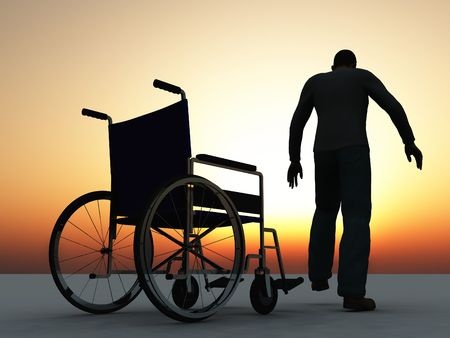
There are two pathways to stroke:
- Infarct or formed clot that blocks the flow of blood of an artery that supplies a certain part of the brain. Without the blood circulation, that part of the pain literally ‘dies'. This is very similar to a pipe providing the water supply to the house. If there is a blockage to the pipe supplying water to the kitchen (for example), you cannot use the kitchen.
- Hemorrhage of blood coming out of the artery that supplies a certain part of the brain. This is similar to a ‘burst’ pipe that provides water to the kitchen. This leads into flooding and again, the kitchen loses its function in this scenario.
I mentioned a ‘certain’ part of the brain. Many arteries or pipes supply different parts of the brain. One may supply the left side of the brain which can affect the ‘Broca’s area’ which controls speech. This leads to the person’s inability to speak or even swallow food and drink fluids properly leading to choking and what is called aspiration pneumonia *(due to food ending in the wrong tube of the throat).
If the pipe supplying the right side of the brain is involved, it affects a person’s perspective. What used to be straight, like the door for example, now appears to be leaning on one side so the person tends to lean and fall. The name is proprioception - the ability to orient oneself in space is affected.
If the part of the brain involved is the cerebellum, balance is affected. The stroke victim starts walking like a drunk person, swaying all over the place, falling constantly in what is described as ‘ataxic’ gait.
If the occipital part of the brain is involved, visual problems are the resulting symptoms.
And then, there is the basal ganglia, a structure at the deepest center of the brain. The basal ganglia are a key part of the network of brain cells and nerves that control your body’s voluntary movements. They can approve or reject movement signals that your brain sends, filtering out unnecessary or incorrect signals. This lets you control certain muscles without also using other muscles that are nearby.
And I mentioned before the frontal part of the brain that can also be affected by stroke in that area. This is the high seat of the brain. If this part of the brain gets involved, it may change the personality of the person. We start complaining about a sudden change in behavior of the person. They become easily agitated, angry, and short tempered. The quiet ones become loud. They lose restraint in saying inappropriate things or they keep repeating certain phrases they just started a few seconds ago.
And then the most visible symptoms in their muscles and movements and numbness are observed and upon which we rely on the most laymen's diagnosis. The standard rule is, when the right side of the brain is affected, the left side muscles become paralyzed or weakened. When the left side of the brain is affected, the right-side muscles become paralyzed or weakened. This is called hemiplegia or hemiparesis. However, as I mentioned earlier, there are quite a few other symptoms (called non-typical or atypical symptoms) besides paralysis or weakness. I have seen stroke cases that do not follow the typical symptoms expected. It could involve only one arm, it could involve only both arms, it could only be some abnormal feeling or numbness, it could manifest no paralysis or weakness, the person keeps losing balance. It could be left arm and right leg. It could just be blindness. A stroke victim can just stare at you without any form of expression or has limited utterances or says ‘Yes’ to everything you ask. (Or ‘No’). This is where Rehabilitation is required. Rehab usually involves PT, OT and ST (Physical Therapy, Occupational Therapy and Speech Therapy).
The most important of the three, at least immediately during the acute phase, is Speech Therapy evaluation because ‘swallowing muscles’ can be affected by stroke. The stroke person needs to take medications, eat and drink. If he cannot swallow these, well, you know what happens. There are immediate saving measures if the swallow dysfunction exists. There is IV for hydration and PEG tube for nutrition but that is beyond the scope of this discussion.
There are different categories of stroke as well.
- MILD STROKE. There is the TIA or ministroke. It is described as something that attacks for a very short period of time, a typical ministroke resolves on its own. But beware. TIAs are considered as warnings. They are telling you to immediately address the underlying cause of your stroke (high cholesterol, high blood pressure, abnormal heart beats, diabetes, high stress etc.) or another TIA or a major stroke can happen later.
- MODERATE STROKE. This is the most typical stroke. It exhibits the typical symptoms we find among regular stroke victims. With Rehab and Therapy, they usually regain their basic functions although very few return back to their normal functions.
- SEVERE STROKE. These are the ones that show severe symptoms ranging from inability to talk or swallow or move. Their mental state is altered. Their behavior ranges from agitation to non-responsive, they typically require long term care and sometimes do not recover their basic functions. These are the unfortunate victims who need twenty-four-hour care.
A mild stroke can come back as a moderate stroke or severe or mild.
(next we'll talk about mechanics of stroke, interventions, and risk mitigation)